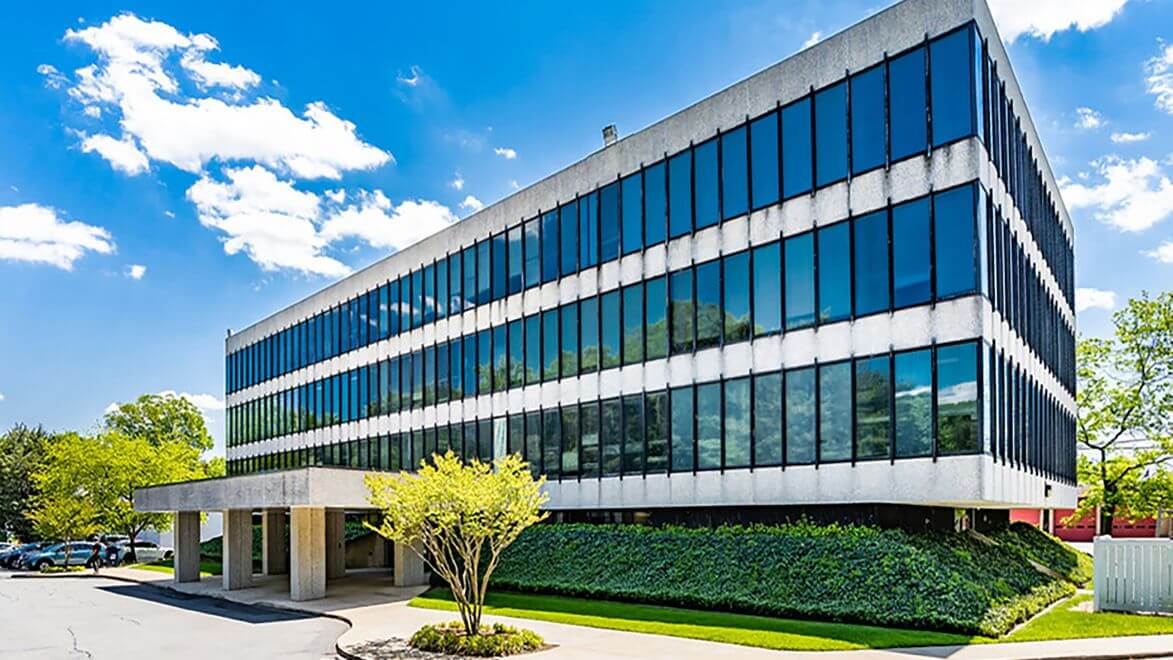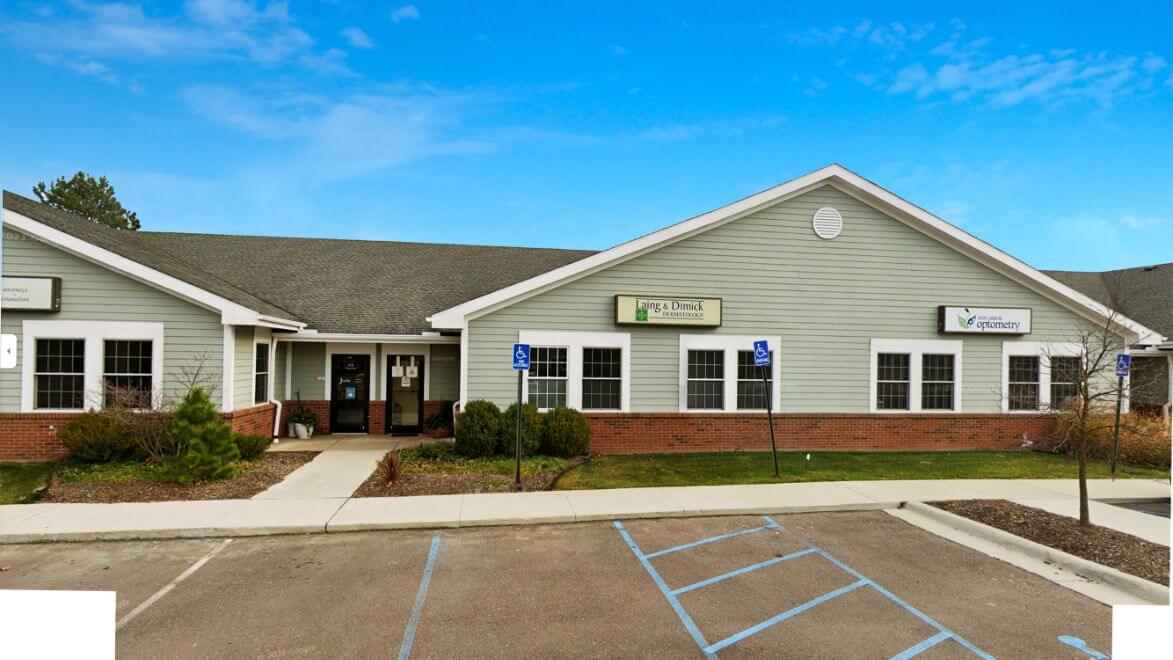Basal Cell Carcinoma
Understanding Basal Cell Carcinoma (BCC)
Basal cell carcinoma (BCC) is the most common form of skin cancer, often developing quietly over time and frequently going unnoticed in its early stages. Each year, nearly three million people are diagnosed with BCC. Though BCC grows slowly, it can cause significant damage if left untreated. That’s why expert evaluation and timely care are so important.
At Pinnacle Dermatology, we specialize in the early detection, diagnosis, and treatment of skin cancers like basal cell carcinoma. With a commitment to personalized care and advanced dermatologic expertise, our team is here to help you navigate every step with confidence and clarity.
Examples of Basal Cell Carcinoma

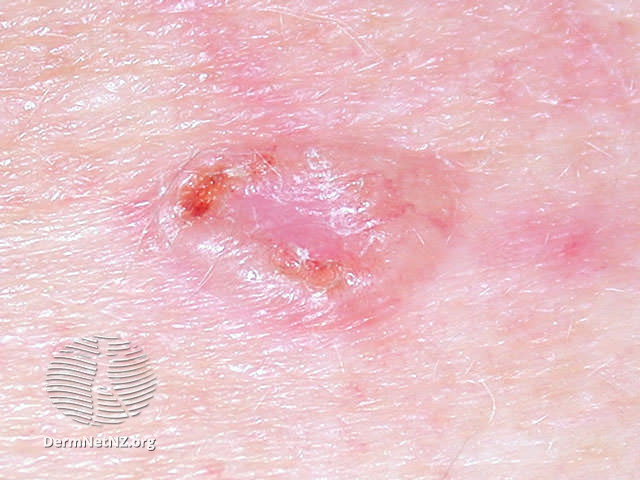

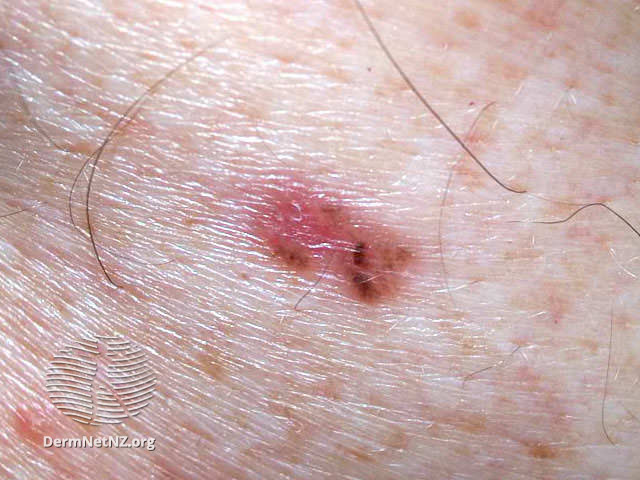
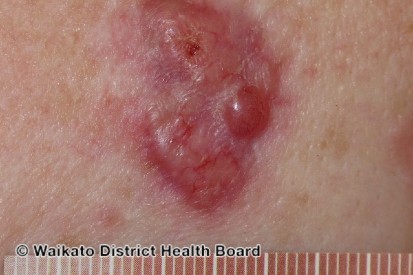
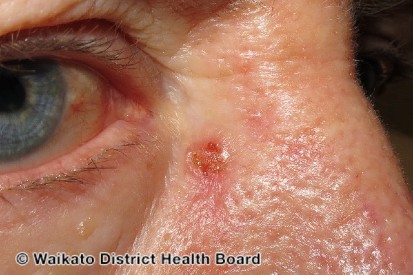
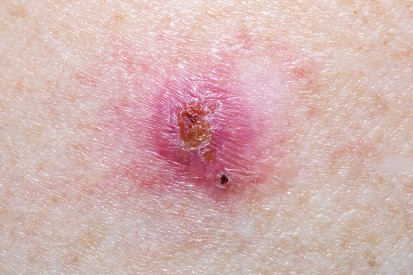
What is Basal Cell Carcinoma?
BCC is a type of basal cell skin cancer and the most common form of skin cancer overall. It begins in the basal cells—small, round cells found in the lower part of the epidermis. Basal cell cancer typically develops in areas frequently exposed to the sun, such as the face, ears, neck, and hands.
While it tends to grow slowly and rarely spreads to other body parts, it can cause local damage if not treated promptly. Recognizing and addressing BCC early is key to preventing complications and preserving healthy skin.
Symptoms of Basal Cell Carcinoma
Basal cell carcinoma (BCC) is the most common form of skin cancer and often develops in areas of the body that are frequently exposed to the sun. Basal cell carcinoma on the face is particularly common. Other frequent sites include the neck, scalp, and arms. Early-stage basal cell carcinoma can be subtle and may resemble non-threatening skin conditions.
BCC typically presents as slow-growing lesions that rarely cause pain but may become problematic over time if untreated. These lesions may look like shiny, pearly bumps, open sores that don’t heal, or flat, scar-like areas. It's essential to consult a dermatologist if you notice any persistent or changing spots on your skin.
Common signs and symptoms of BCC include:
- A pearly or waxy bump, often with visible blood vessels
- A flat, flesh-colored, or brown scar-like lesion
- An open sore that bleeds, oozes, or crusts and remains open for weeks
- A pink growth with a slightly raised, rolled border and a crusted indentation in the center
- A red patch that may itch or hurt
- Lesions developing on sun-exposed areas like the face, ears, neck, scalp, shoulders, and back
Causes of Basal Cell Carcinoma
The primary cause of BCC is prolonged exposure to ultraviolet (UV) radiation from the sun or tanning beds. Those over the age of 40 are also more susceptible to BCC. While anyone can develop it, certain risk factors increase the likelihood, including genetics and skin type.
Common causes of BCC include:
- Chronic sun exposure, especially as a child, without protection
- Use of tanning beds
- Fair skin, light eyes, and blond or red hair
- A history of severe sunburns, especially in childhood
- A family history of skin cancer
- Genetic conditions, such as basal cell nevus syndrome
- A weakened immune system due to illness or medication
Preventing Basal Cell Carcinoma
While basal cell cancer is most often caused by cumulative sun exposure, many cases can be prevented or caught early with the right habits. Practicing sun protection year-round and regular skin checks can help reduce risk. Understanding what BCC looks like, especially in the early stages, is critical for catching it before it becomes severe.
Common preventative measures include:
- Using a broad-spectrum sunscreen with SPF 30 or higher daily, even on cloudy days
- Avoiding sun exposure during peak hours (10 AM – 4 PM)
- Wearing protective clothing, wide-brimmed hats, and UV-blocking sunglasses when outdoors
- Staying in the shade whenever possible, especially during midday
- Avoiding tanning beds, which significantly increase skin cancer risk
- Performing regular self-skin checks and being aware of BCC symptoms, such as shiny bumps, open sores, or scar-like patches
- Learning to recognize what basal cell carcinoma looks like using credible resources and basal cell carcinoma pictures of the early stages
- Scheduling annual total body skin examinations with a dermatologist for professional screening
How Is Basal Cell Carcinoma Diagnosed?
Diagnosing basal cell carcinoma begins with a careful visual and clinical skin assessment. This form of skin cancer often presents as abnormal growths or lesions on sun-exposed areas. Understanding how it differs from other types of skin cancer is critical for early treatment.
For example, nodular basal cell carcinoma, one of the most common subtypes, often appears as a shiny bump or nodule, especially in areas like the nose and cheeks. So, how is basal cell carcinoma diagnosed? The process generally includes a combination of physical examination and, when necessary, a skin biopsy for confirmation.
Physical Examination
A dermatologist will begin by visually inspecting the lesion. They assess its size, color, texture, and location. Lesions found on high-risk zones such as the nose, eyelids, and other parts of the face are given particular attention, as basal cell carcinoma on the face tends to be more invasive and may require more complex treatment. Your dermatologist will also ask about any history of sun exposure, changes in the lesion, bleeding, or non-healing wounds.
Skin Biopsy Procedure
If a lesion appears suspicious, the dermatologist typically performs a skin biopsy to confirm the diagnosis. This involves removing a small sample of skin tissue, which is then examined under a microscope. The type of biopsy—whether a shave, punch, or excisional biopsy—depends on the lesion's size, depth, and location. This crucial step helps distinguish basal cell carcinoma vs squamous cell carcinoma.
Basal Cell Carcinoma vs Other Skin Cancers
Basal cell carcinoma usually appears as a pearly bump, open sore, or scar-like area, often on sun-exposed parts of the body. Unlike melanoma, which can spread quickly and become life-threatening, BCC rarely spreads beyond the original site. However, it can still cause significant tissue damage if left untreated.
When comparing basal cell carcinoma vs squamous cell carcinoma, the latter tends to grow faster and has a higher risk of spreading to other parts of the body. Recognizing the differences between these skin cancers is crucial for early diagnosis and choosing the most effective treatment. Watch our video on non-melanoma skin cancers below.
Non-Melanoma Skin Cancers
Types of Basal Cell Carcinoma
Basal cell cancer appears in several different subtypes, each with unique characteristics. Recognizing the specific basal cell skin cancer type helps dermatologists determine the most effective treatment and predict the likelihood of recurrence. Here are all the types of basal cell carcinoma:
Nodular
The most common type, nodular basal cell carcinoma, typically appears as a shiny, pearly bump on sun-exposed areas like the face or nose. It may bleed, ulcerate, or develop visible blood vessels (telangiectasia) on the surface. Sometimes, the lesion may form a central indentation or crust over time.
Superficial Spreading
This type often presents as a red, scaly patch with slightly raised borders and is more likely to appear on the shoulders or limbs. It grows slowly and can sometimes be mistaken for eczema, psoriasis, or a fungal rash. Unlike other forms of BCC, superficial BCC can cover a larger surface area but generally remains confined to the top layer of the skin.
Sclerosing
Also referred to as morpheaform basal cell carcinoma, this subtype is less common but more aggressive. It appears as a flat, firm, scar-like area with ill-defined edges and may be white, yellow, or skin-toned. Because it spreads more extensively under the skin, it can be challenging to treat.
Pigmented
Pigmented BCC is similar in growth pattern to nodular basal cell carcinoma but contains increased melanin, giving it a brown, blue, or black appearance. This can lead to confusion with melanoma, requiring a careful biopsy for proper diagnosis. It is more common in individuals with darker skin tones.
How to Treat Basal Cell Carcinoma
Treatment for BCC depends on several factors, including the size, depth, and location of the lesion, as well as the patient’s overall health. With various effective approaches available, from surgical options to newer non-invasive therapies, it’s crucial to tailor the treatment to each case. Early intervention can improve outcomes and minimize scarring. Whether the goal is basal skin carcinoma removal or long-term management, knowing the range of available treatments is essential.
Non-Surgical Treatments
There are several non-surgical treatment options for patients who are not candidates for surgery or prefer less invasive approaches. These include topical medications such as imiquimod or 5-fluorouracil, which can be effective for superficial BCCs.
Basal cell carcinoma radiation treatment may be recommended for older adults or those with tumors in difficult-to-operate locations. Electrodesiccation and curettage involve numbing the area, scraping off the lesion, and cauterizing it to destroy remaining tumor cells and control bleeding. Cryotherapy is another option, which freezes the lesion with liquid nitrogen. Additionally, superficial radiation therapy (SRT) treatment for skin cancer is emerging as a non-invasive alternative for certain patients, particularly for low-risk lesions.
Surgical Procedures
Surgery remains the most common and effective option for basal cell carcinoma treatment. Excisional surgery involves cutting out the cancerous lesion along with a small margin of healthy tissue to ensure complete removal. Another highly effective technique is Mohs surgery for basal cell carcinoma, especially used for facial areas or lesions with a high risk of recurrence.
This precise method involves removing the cancer layer by layer while examining each layer under a microscope, ensuring minimal damage to surrounding healthy skin. Mohs surgery offers the highest cure rates, around 98% for primary, non-recurrent BCC, while preserving healthy tissue and delivering excellent cosmetic outcomes.
New and Emerging Treatments
Advancements in skin cancer treatment have led to promising new therapies for basal cell carcinoma. Targeted drugs such as hedgehog pathway inhibitors are used for advanced or recurrent cases that don’t respond well to conventional treatment. Immunotherapy and photodynamic therapy are also being explored in clinical settings for patients who need alternatives to traditional basal cell carcinoma surgery.
Topical therapeutic options, including certain creams or ointments, may also be considered for specific lesions. Your dermatologist will discuss these based on the characteristics of your basal cell carcinoma.
Choose Pinnacle Dermatology for Basal Cell Carcinoma Treatment
At Pinnacle Dermatology, you're in expert hands. Our experienced skin cancer specialists offer personalized care and use advanced diagnostic and treatment options, including Mohs surgery, to treat BCC with precision.
Take control of your skin health today. Browse dermatologist-recommended SPF products in the QualDerm online store. Learn more about treatment options and explore preventative care like cancer screenings and full-body skin exams. Ready to take the next step? Schedule an appointment with a Pinnacle Dermatology provider near you.
Basal Cell Carcinoma FAQs
Individuals with fair skin, a history of frequent sun exposure, or a family history of skin cancer are at higher risk. However, anyone can develop BCC.
While BCC rarely spreads (metastasizes) to distant organs, it can grow deeply and damage surrounding tissues if left untreated. Early detection helps prevent complications.
Yes, Mohs micrographic surgery is an effective treatment option for Basal Cell Carcinoma (BCC). Mohs surgery is a specialized and precise technique primarily used to remove skin cancers, especially those in areas where preserving healthy tissue is critical, such as the face, ears, nose, and other cosmetically sensitive regions.
In Mohs surgery, the surgeon removes thin layers of cancerous tissue, immediately examining each layer under a microscope. This process continues layer by layer until no cancer cells are visible, ensuring that the cancerous cells are removed while minimizing the removal of healthy surrounding tissue. This technique allows for precise removal of cancer cells while preserving as much healthy tissue as possible, leading to better cosmetic outcomes, especially in delicate areas.
Mohs surgery is often recommended for BCCs that are large, have ill-defined borders, are located in areas where tissue preservation is crucial (such as the face), or have a higher risk of recurrence. It offers high cure rates, with minimal damage to the surrounding healthy tissue, making it an excellent choice for treating certain types of Basal Cell Carcinoma. However, the decision for Mohs surgery or other treatment options depends on various factors, including the type, size, and location of the BCC, as well as individual patient factors, which should be discussed with a dermatologist or skin cancer specialist.
Yes, BCC can recur in the same area, even after successful treatment. While most cases are fully treatable, there is still a risk of the cancer returning, especially if the initial tumor was large, aggressive, or not completely removed. Regular skin checks and follow-up appointments with your dermatologist are essential for catching recurrences early.
Continuing sun protection measures, regular self-examinations, and routine skin checks with a dermatologist are key to preventing recurrence.
A Total Body Skin Examination (TBSE) is a comprehensive evaluation of a person's skin from head to toe conducted by a dermatologist or healthcare professional. During this examination, the healthcare provider systematically inspects the skin, including areas that are not typically exposed to sunlight, to assess for any signs of skin cancer, abnormal moles, or other skin conditions.
The exam usually involves the patient removing all clothing and wearing a gown or drape provided by the healthcare professional. The dermatologist examines the skin, scalp, face, neck, trunk, arms, legs, hands, feet, fingernails, and toenails, checking for any suspicious lesions, moles, discolorations, or changes in existing moles or spots.
The purpose of a Total Body Skin Exam is early detection of skin cancers such as melanoma, basal cell carcinoma, and squamous cell carcinoma, as well as other skin conditions. It allows healthcare providers to identify any concerning areas that might require further evaluation, biopsy, or treatment.
Patients are often encouraged to have regular Total Body Skin Exams, especially if they have a history of skin cancer, numerous moles, a family history of skin cancer, or if they spend significant time in the sun. These exams aid in the early detection and management of skin conditions, potentially improving outcomes and reducing the risk of complications associated with skin cancers.
From the Pinnacle Blog

- Skin Cancer
- Skin Exams
Skin Cancer Prevention: 5 tips and tricks for your skin's protection.
Read More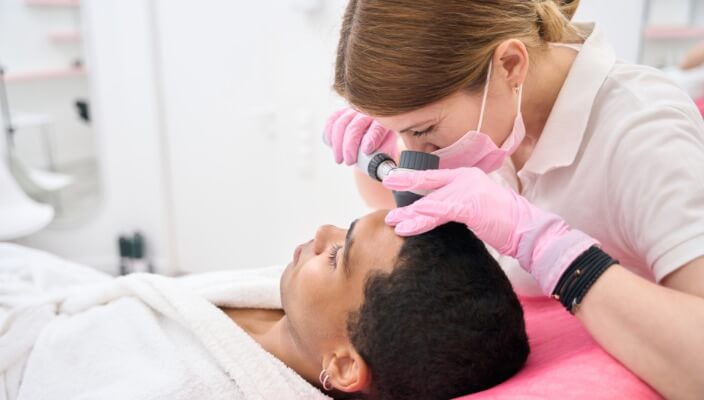
- Skin Cancer
- Skin Exams
Uncover crucial facts about skin cancer prevention, dispel myths, and stress the significance of sun protection and regular skin checks, all underlined by compelling statistics.
Read More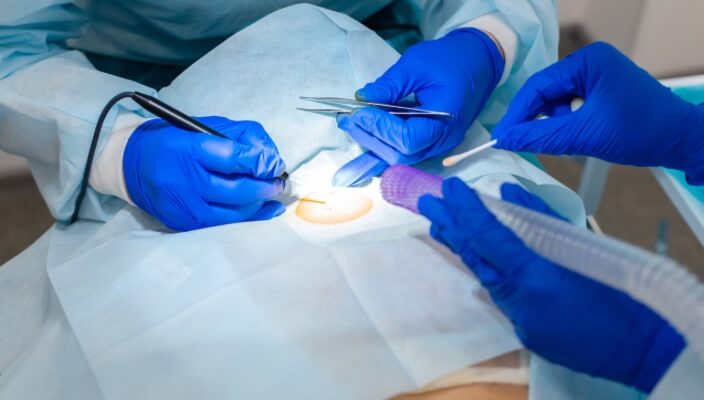
- Skin Cancer
Skin cancer, one of the most prevalent types of cancer, has witnessed a transformative journey in its treatment landscape.
Read MoreFeatured Products for Sun Protection
Check your local office for current stock!
Check your local office for current stock!

